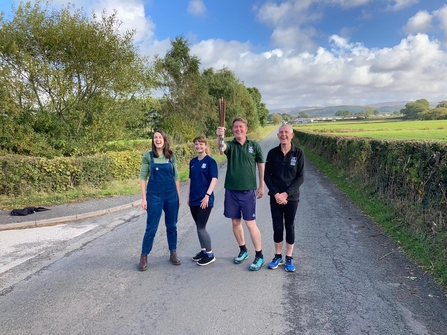Starting in Glasgow, the site of the COP26 climate summit, and continuing 7,767km all the way to Sharm-el-Sheik in Egypt, the site of COP27, the Running out of Time relay aims to highlight the desperate plight our planet faces in the face of the climate emergency. The relay will pass a handful of outstanding climate-positive projects along the route – and our Winmarleigh carbon farm was chosen as one of them.
The relay reached the village of Winmarleigh at approximately 12noon on Sunday 2 October. The baton was carried by Lancashire Wildlife Trust CEO, Tom Burditt, along with a team of runners from across Lancashire Wildlife Trust.


